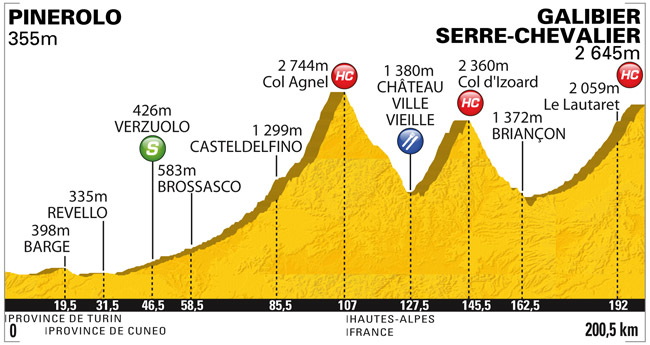
You don’t have to be Cadel Evans to know there’s a difference between climbing the 1 in 20 and climbing Mt. Hotham. One’s a short and relatively easy climb on the lower slopes of Mt. Dandenong, the other is one of the most challenging climbs in the state.
But how do we differentiate between these climbs on paper? Sure, we can list the length and average gradient of each climb but wouldn’t it be great if we had a single number that could tell us, at a glance, how tough a climb is?
Of course, such a system is used in the Tour de France, with every climb worth its salt assigned to a particular category. The easiest climbs are designated as 4th category, slightly harder climbs are designed as 3rd category and so on, until you get to the most challenging climbs of all: the epic Hors Categorie (“beyond categorisation”) mountains.
Think of the biggest and most challenging climbs of the Tour de France — Alpe d’Huez, the Col du Tormalet the Col du Galibier — all of these monsters are Hors Categorie climbs.
So how do the Victorian climbs stack up? How many Hors Categories climbs are there in Victoria?
Well, I’ve gone through all of the climbs on this site, analysed their length, average gradient and their elevation change, and assigned them to a category accordingly. At the top of each climb’s page, you’ll see a little red image* showing what category that particular climb belongs to.
How do we determine what category a climb should be? In the Grand Tours the race organisers apparently take a number of factors into account, including:
- The length and gradient of the climb
- Where the climb falls in that particular stage of the race
- The quality of the road surface
In general though, it’s the difference in elevation between a climb’s start and finish that guides the classification process:
- 4th category: climbs with an elevation change of 100m-300m
- 3rd category: climbs with an elevation change of 300m-600m
- 2nd category: climbs with an elevation change of 600m-1000m
- 1st category: climbs with an elevation change of 1000m-1500m
- Hors categorie: climbs with an elevation change of 1500m+
These ranges are only a guideline and the classification of a number of climbs on this site don’t match the above guidelines if you only consider a change in elevation.
Mt. Baw Baw, for example, has an elevation change of “only” 960m which, according to the above guidelines, would make it a 2nd category climb. But given the difficulty of Mt. Baw Baw’s final 6.8km, it’s more than deserving of its Hors Categorie classification.
So, what are your thoughts? Are these classifications fair enough? Leave your comments and suggestions below.
* Images courtesy of MapMyRide

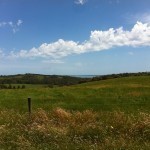
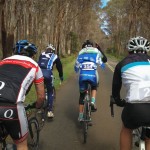

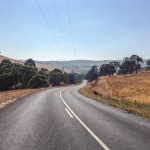
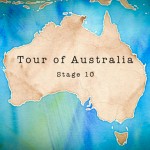
I rode mt macedon today from the gisbourne side. Its a cat 3 but is much much harder than many cat 1s like Buffalo and Falls. The first 6 km section is steep and unrelenting.
Hi Matt.
Cool site. Nice reading about some climbs Ive done, and others still to do.
Couple of rides you should write up:
Something for the westies: Glenmore Road Hill, sw of Bacchus Marsh. Part of the Balliang ‘Hell of the west’. Only short, but……
and of course, Mt William, Grampians. The last couple of steep km to the summit on the closed road above the tree line are beautiful.
re the Dargo to Grant turn-off climb: I reckon that this is amongst the toughest climbs in the state (and a blast to descend). I agree it’s a must for your site. If the back of Falls is HC, Dargo’d have to be up there with it: ‘Long-cutting’ and that last steep pinch a few km before the top are a killer!
Maybe see you out there one day.
I read this book called ‘Lycra, Lattes and the Long Way Round’, about a guy who rode his bike around France, including the Alps, the Pyrenees and some other big mountains in Spain and Italy. Apparently Arthurs Seat was his training ground. He talked about climbs in his book and claimed Arthurs Seat was a Category 3 with an 8.1% gradient.
I notice the Cat 1 climb to Dargo is not featured on your site?
http://www.mapmyride.com/routes/view/56592946
Hi Pete. You’re quite right. But it’s right near the top of the list of climbs I need to add. 🙂
Love the site. One day, it’d be fun to turn into a book 🙂
FWIW, Tour climb categorizations vary a lot. In the early stages, they often put a 4th-cat point on any little lump they can find so that the KOM sponsor gets some publicity. And steepness and placement in the stage matters a lot more than these guidelines suggest.
For instance, Donna Buang would normally be a cat 1 in the Tour, but it would almost certainly be a HC if placed at the end of the stage.
Oh, and Terrys Avenue should probably be at least a Cat 2, given its extreme steepness. Falls Creek is a piece of cake compared to Terrys.
Scary that Arthurs Seat is only Cat 4. I have ridden easier climbs that are rated higher.
Is it due to the length?
Hi Dan. Thanks for your comment. It’s based on elevation change: Arthurs Seat has an elevation change of only ~200m, and 3rd category starts at 300m elevation-change. That said, it is pretty steep!
Who else thinks Arthurs Seat should be Cat 3?
Hi Matt,
Thanks for a good summary of the categorization of climbs.
I looked into this recently, and read somewhere that the original classifications were based on the lowest gear a car would need to use to make it up the road. Obviously, the system has changed a bit since then, but it (if correct) this does provide an interesting perspective.
Cheers, Hayden
Hi Hayden,
That’s interesting – I hadn’t heard that before! I should look into it …
Cheers,
Matt
Hi There,
Like how you have categorised the climbs and I look forward to tackling them! I am now an addicted climber as I have just returned from France after riding across the Alps with a fantastic tour called “Les Dix Alps”
I have to say the Galibier climb from Telegraphe side was one of the hardest days of riding I did- especially when the temp is pushing 35 deg! Another tough climb is Col de la Bonnete where after climbing for 35k you arrive the the highest road in Europe by grinding your way up 14% on the last km.
Would like to know if you do organised rides?
Cheers,
Andrew Humphris
Hi Andrew,
Thanks for stopping by. Sounds you had a marvelous time in the Alps. Watching the TdF this year I just felt like booking flights to France straight away and getting stuck into the climbing. There are some truly magical climbs over there and I’m definitely keen to experience them first hand at some point.
The Galibier sounds pretty challenging, despite how easy the pros make it look!
As for organised rides: I don’t, at least not at the moment anyway. I’m always happy to head out for a ride though, just hit me up with an email. If you haven’t already seen these two sites, they are well worth a look: http://www.bunchridefinder.com.au/ & http://www.cyclingtipsblog.com/bunch-rides/melbourne-rides/
Thanks again for stopping by and I hope that helps!
Cheers,
Matt